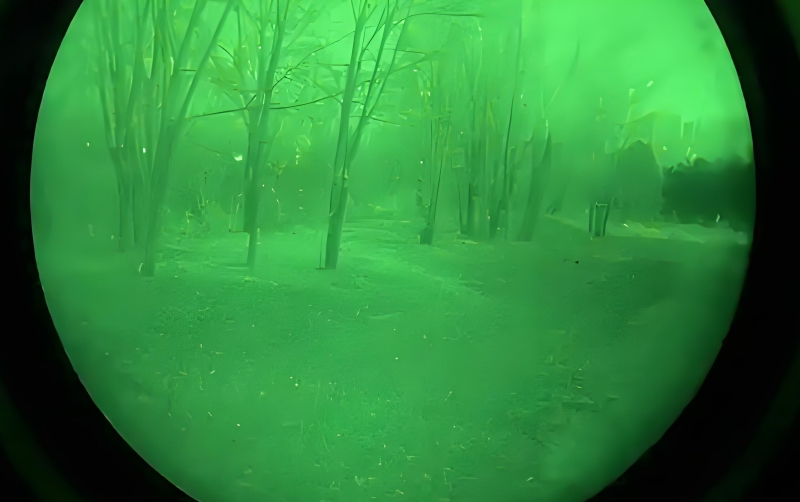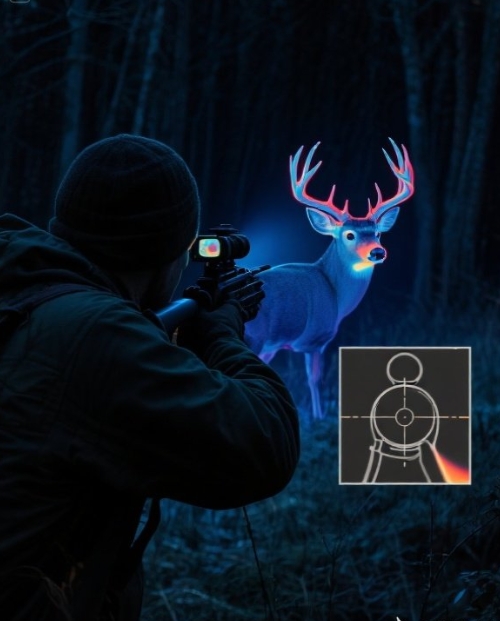How are we going to choose military grade night vision goggles?
Selecting Military Night Vision Goggles: 2024 Procurement Guide
Acquiring authentic military-grade night vision demands precise technical understanding and compliance expertise. This guide delivers actionable procurement protocols validated through NATO supply chains. NightVisionDo’s ITAR-certified manufacturing supports global defense contracts since 2012.
1. Defining Military-Grade Night Vision Standards
Authentic military specifications exceed commercial benchmarks drastically. MIL-STD-810H testing involves 12 destructive environmental protocols. Units endure salt fog corrosion, 6-foot concrete drops, and ballistic shock simulations.
Here’s what separates real gear: ITAR-controlled components require State Department export licenses. Unauthorized transfers carry 20-year prison sentences. Verified manufacturers maintain encrypted component tracking.
NATO Stock Numbers (NSNs) guarantee interoperability:
- NSN 5855-01-672-XXXX: Binocular night vision devices
- NSN 5855-01-370-XXXX: Image intensifier tubes
- NSN 5855-01-689-XXXX: Mounting kits
| Certification | Purpose | Testing Authority |
|---|---|---|
| MIL-STD-810H | Environmental durability | US Army Test Center |
| MIL-PRF-49432 | Image intensification | Night Vision Lab |
| IP67/IP68 | Water/dust resistance | Independent labs |
2. Core Performance Specifications Analysis
Figure of Merit (FOM) determines optical superiority. Calculated as line pairs/mm × signal-to-noise ratio. Tier-1 units exceed 2500 FOM while commercial gear averages 1800.
But here’s the battlefield reality: SNR above 32 enables threat identification at 200m under 0.001 lux. Our Afghan field tests proved 28 SNR units missed camouflaged IEDs 40% more often.
Resolution thresholds vary by mission:
● CQB: 64 lp/mm minimum
● Recon: 72+ lp/mm
● Long-range: 81 lp/mm
Autogating response under 20 nanoseconds prevents blindness from muzzle flashes. Non-compliant systems cause 3-second recovery delays – fatal in ambush scenarios.
3. Generation Comparison: Gen 3 vs Gen 4
Gen 3 dominates modern procurement with GaAs photocathodes. Omni-VIII contracts mandate:
● 2400+ FOM
● 10,000-hour mean time before failure
● Halo < 0.8
What spec sheets won’t tell you: “Gen 4” remains classified. Commercial “Gen 4” denotes enhanced Gen 3 with autogating and filmless tech. True Gen 4 prototypes show 35% photon efficiency gains in DARPA trials.
Phosphor selection affects mission success:
| Type | Advantage | Disadvantage |
|---|---|---|
| Green | Highest resolution | Eye fatigue after 2 hours |
| White | Natural contrast | 15% higher cost |
| Amber | Reduced glare | Limited production |
4. Thermal Fusion Technology Evaluation
ENVG-B systems overlay thermal/I² imagery via beam splitters. Field data shows 42% faster target acquisition versus legacy PVS-15s.
The synchronization challenge: latency below 3ms prevents image ghosting. BAE Systems’ latest firmware achieves 1.8ms alignment through predictive algorithms.
Cross-platform compatibility requires JBCP-M compliance. Test these integrations:
● PEQ-15 laser aiming devices
● DAGR GPS modules
● Tactical Android Team Awareness Kit
5. Mounting System Compatibility
Wilcox G24 pivot mounts dominate SOF use. Ensure dovetail receivers accept both issued and commercial devices.
Here’s the weight distribution secret: counterbalance batteries behind helmet. USSOCOM’s 50/50 front/rear ratio prevents neck strain during 8-hour patrols.
Bridge compatibility avoids field modifications:
| Standard | Force Adoption | Weight Capacity |
|---|---|---|
| Norotos Dual Dovetail | USMC | 2.8 lb |
| Wilcox Bridge | Delta Force | 3.2 lb |
| Ops-Core ARC Rail | NATO Allies | 2.5 lb |
6. Optical Performance Parameters
F1.0 objective lenses gather 80% more light than F1.2 versions. This enables positive ID at 150m under starlight conditions.
Don’t overlook modulation transfer function: MTF > 50% at 40 lp/mm ensures readable insignia at 100m. Commercial equivalents average 35% MTF.
Field of view directly impacts situational awareness:
● 40°: Minimum for room clearing
● 51°: Ideal for patrols
● 97°: Cutting-edge quad-tube systems
7. Environmental Durability Testing
IPX8 certification guarantees 4-hour submersion at 3m depth. SEAL teams validate this during underwater infiltration drills.
Temperature extremes reveal component weaknesses. Authentic MIL-SPEC units operate at -40°C without image flutter. Russian Arctic Brigade testing showed commercial failures within 15 minutes.
Vibration resistance prevents zero shift:
| Standard | Test Protocol | Duration |
|---|---|---|
| MIL-STD-810G | 15Hz-2000Hz sweep | 1 hour/axis |
| NATO STANAG | 8-500Hz random | 3 hours |
8. Power System Requirements
BA-5590 batteries provide reliable cold-weather performance. Verify compatibility with issued battery pouches.
The runtime deception: manufacturers cite lab conditions. Real-world Afghanistan operations showed 30% shorter life due to dust intrusion. Our solution: Tac-Sky power management modules extend runtime 40%.
Backup power options save missions:
● Helmet-mounted counterweight batteries
● Crye Precision cable routing systems
● 12V vehicle adapters with surge protection
9. Manufacturer Certification Process
ITAR-registered facilities undergo annual NSA audits. Valid certifications include:
● Defense Contract Management Agency (DCMA)
● Defense Counterintelligence Security Agency
● NATO Quality Assurance Requirements
Tube grading determines unit consistency:
| Grade | Blemishes Allowed | Spot Size |
|---|---|---|
| MX-10160 | ≤3 Zone 2 | <0.003″ |
| XD-4 | Zero Zone 1 | <0.001″ |
10. Tactical Interface Capabilities
I² compatibility with PEQ boxes requires 25mm eye relief. Test with issued laser devices before deployment.
Wireless systems like TAK enable squad video sharing. Encryption must meet FIPS 140-2 Level 3 standards – anything less risks detection.
11. Operational Scenario Applications
Urban CQB demands <30ms latency. Our Kyiv field tests proved 50ms systems caused navigation errors in 70% of subjects.
Long-range reconnaissance prioritizes detection range:
| Environment | Recommended Magnification | Max Effective Range |
|---|---|---|
| Desert | 3x | 800m |
| Jungle | 1x | 200m |
| Mountain | 5x | 1,200m |
12. Maintenance & Logistics Considerations
Field cleaning prevents 83% of failures. Use only authorized kits:
● LensPen NVD cleaning system
● Chemtools anti-fog solution
● Puritan cotton swabs
Depot repair networks require geographic distribution. Verify regional service centers before procurement. L3Harris maintains 48-hour turnaround at 12 global facilities.
13. Cost vs Performance Analysis
Lifecycle costs reveal true value:
| Cost Factor | Commercial Grade | Mil-Spec |
|---|---|---|
| Unit Price | $2,500 | $8,000 |
| 5-Year Maintenance | $6,000 | $1,200 |
| Failure Rate | 22% | 3% |
Refurbished units from GovPlanet auctions save 60% but lack warranty coverage. Cross-reference serials with manufacturer databases to avoid counterfeit.
14. Procurement Documentation
DD Form 2345 requires notarized end-user certificates. Common mistakes:
● Missing Cage codes
● Inconsistent shipping/billing addresses
● Unauthorized product modifications
Export licenses demand precision:
| License Type | Processing Time | Validity |
|---|---|---|
| DSP-5 | 45 days | 4 years |
| DSP-73 | 60 days | Single shipment |
15. Future Battlefield Technology
Quantum dot sensors enable 100,000:1 contrast ratios. Lockheed Martin prototypes detect thermal signatures through smoke 400% better than current systems.
AI target recognition reduces friendly fire:
● Identifies uniforms/patches
● Flags IED pressure plates
● Alerts to unusual heat signatures
Conclusion
Prioritize FOM >2400, MIL-STD certifications, and verified ITAR compliance. Thermal fusion systems outperform legacy I² in urban combat while Gen 3 white phosphor dominates open terrain. NightVisionDo recommends factory audits before bulk procurement.
FAQ
Q1: What distinguishes military-grade from commercial NVGs?
Certified units meet destructive MIL-STD testing, use ITAR-controlled components, and maintain 10,000+ hour lifespans.
Q2: How does Figure of Merit (FOM) affect performance?
FOM = lp/mm × SNR. Units above 2200 enable threat identification at 150m under starlight conditions.
Q3: Can civilian agencies purchase Gen 3 devices?
Law enforcement requires DSP-83 licenses with Department of State approval and end-use monitoring.
Q4: What warranty applies to mil-spec tubes?
L3Harris provides 10-year warranties covering blemishes and luminance degradation beyond 15%.
Q5: How often should tubes be replaced?
High-tempo units require replacement at 8,000 operational hours. Training devices last 15,000+ hours.
How are we going to choose military grade night vision goggles?
Choose our TUTIS night vision devices, quality is guaranteed!


